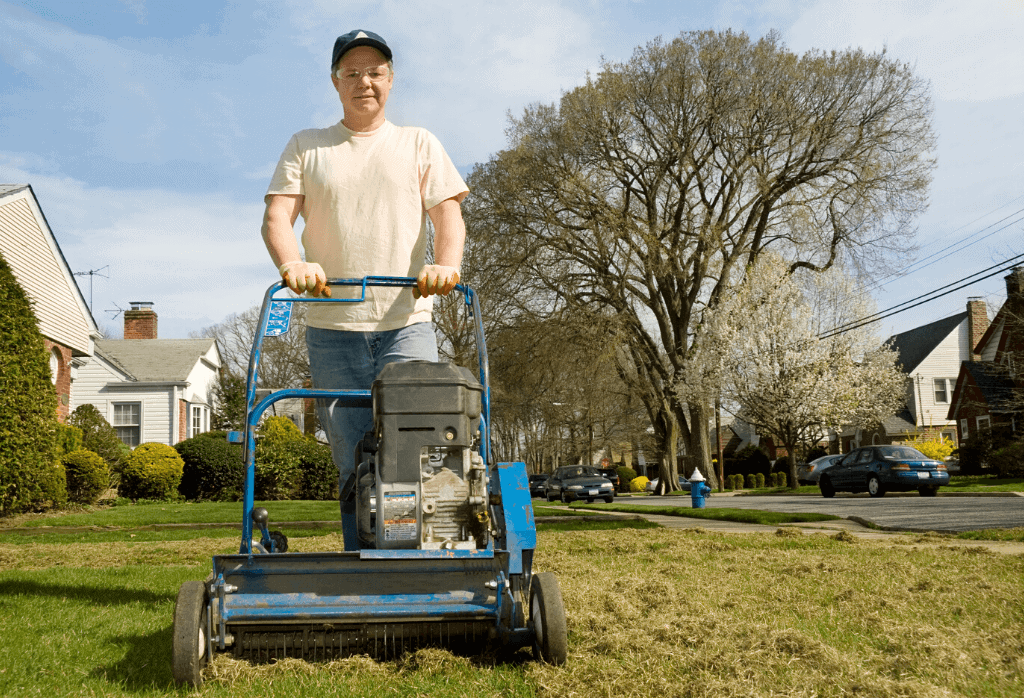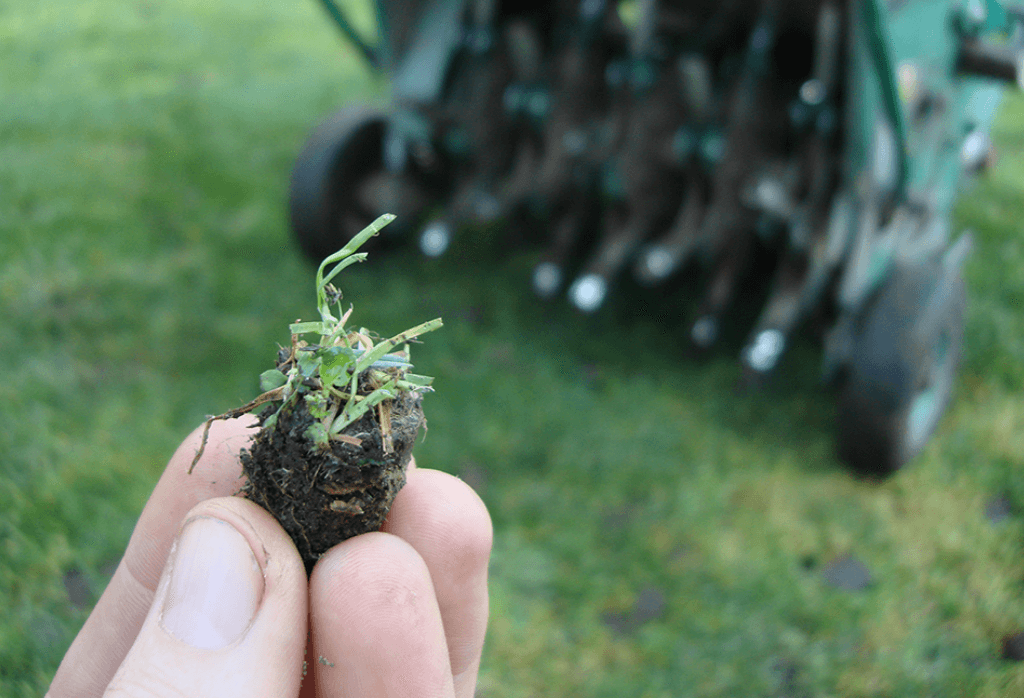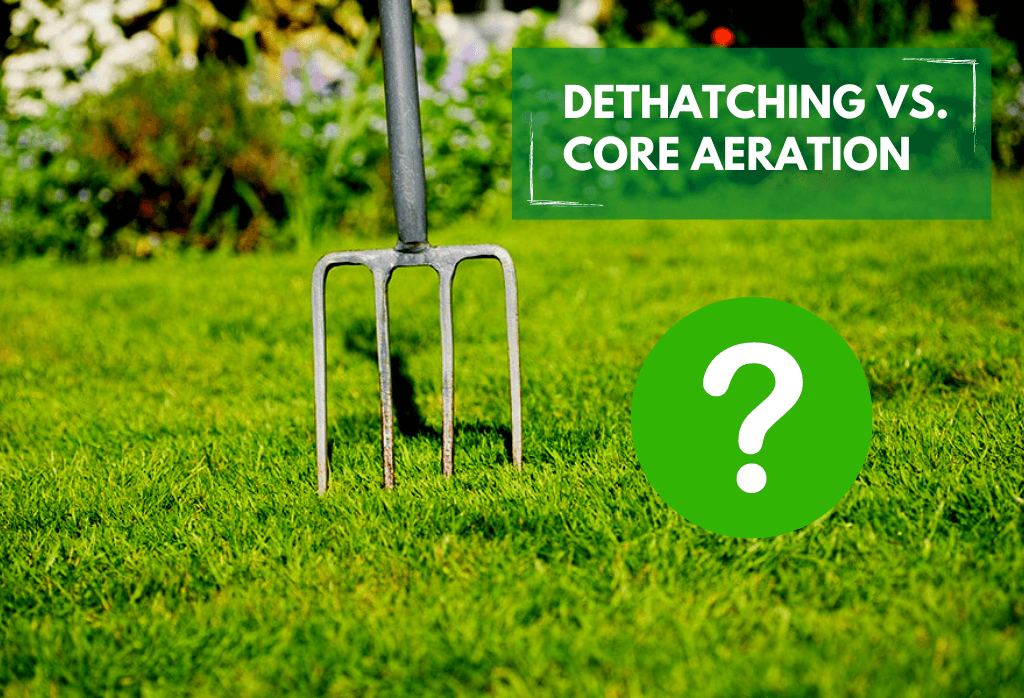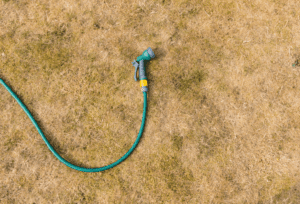Dethatching vs. Aeration: What’s the Better Method?
The term often used to describe the process of cleaning up a ‘thatchy’ lawn is “dethatching”. Fewer homeowners are familiar with the process of core aeration. For the best possible lawn, it is important to understand the significant differences. Let’s start with the objective, thatch removal.
Dethatching
Thatch is the layer of dead but undecomposed plant parts, mainly dead leaf blades and stems that, when allowed to build up, create a blocking layer, preventing air, water and fertilizer from reaching grass roots, where they are taken up.

To remove or break up this troublesome layer of plant parts, dethatching machines were created in the early 1900s. The ‘dethatcher’ uses spring loaded wire tines on a whirling axle, to reach down into the thatch and pull it up and out of the lawn. Makes sense, right? Wrong.
As researchers and turf managers learned over time, ‘dethatching’ machines can do more harm than good. It has been conclusively shown that slicing through thatch, ripping up the lawn, really does not remove much thatch at all. While this process is very stressful to otherwise healthy turf, tearing blades apart as it moves over the lawn, homeowners are left with a real mess! And, sadly, the thatch layer remains.
Core Aeration
Remember, the objective is to allow air, water and fertilizer to reach plant roots.
There is a better, less stressful and more effective way to accomplish the goal. It’s called ‘core aeration’. Rather than using tearing wire tines, core aerators force hollow tines into the soil, actually removing small plugs of soil, roughly the size of your little finger. The benefits of removing plugs is that it creates openings in the soil, enhancing the movement of air, water and fertilizer an inch or more into the grass root zone, where they are needed.

Pulling plugs from the soil, improving conditions for root growth, also results in accelerated microbial action, further degrading the thatch layer. So, to help reduce and manage thatch problems, core aeration, typically on an annual basis, is highly recommended.
Join Our Free Lawn Care Newsletter
Stay Up to Date With The Latest News & Updates
* We don’t share your info with anyone ever.





